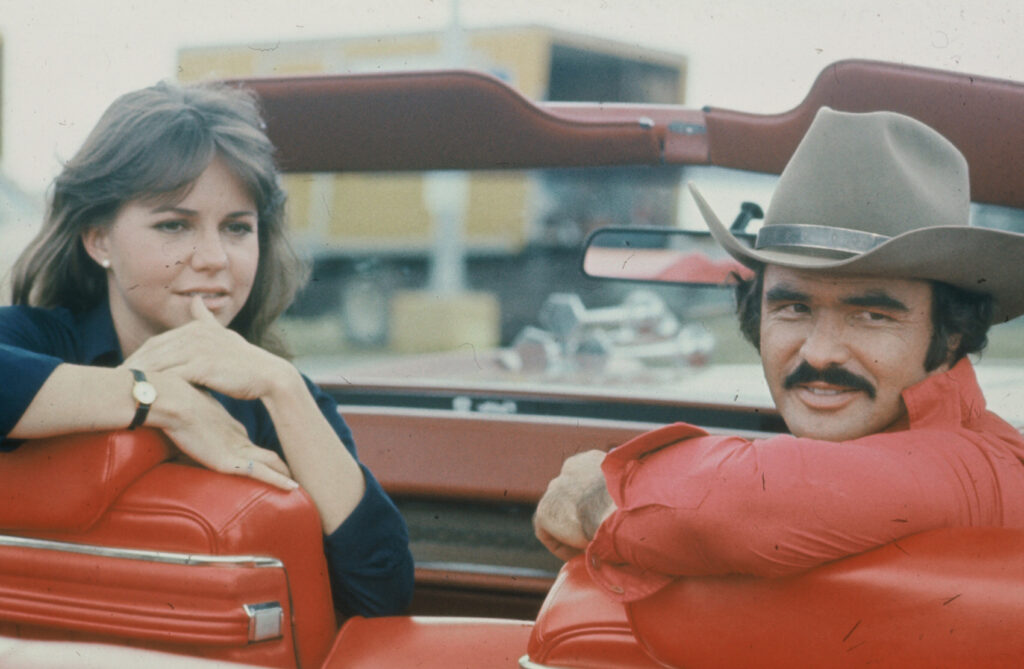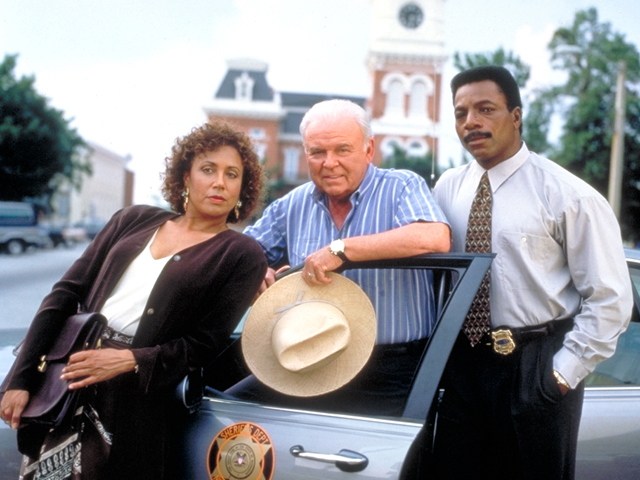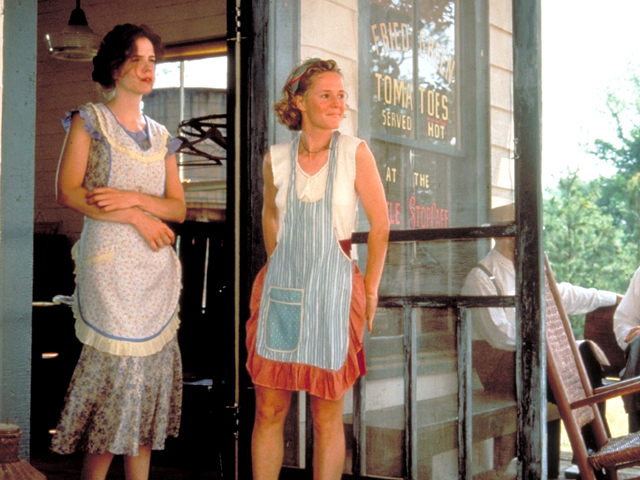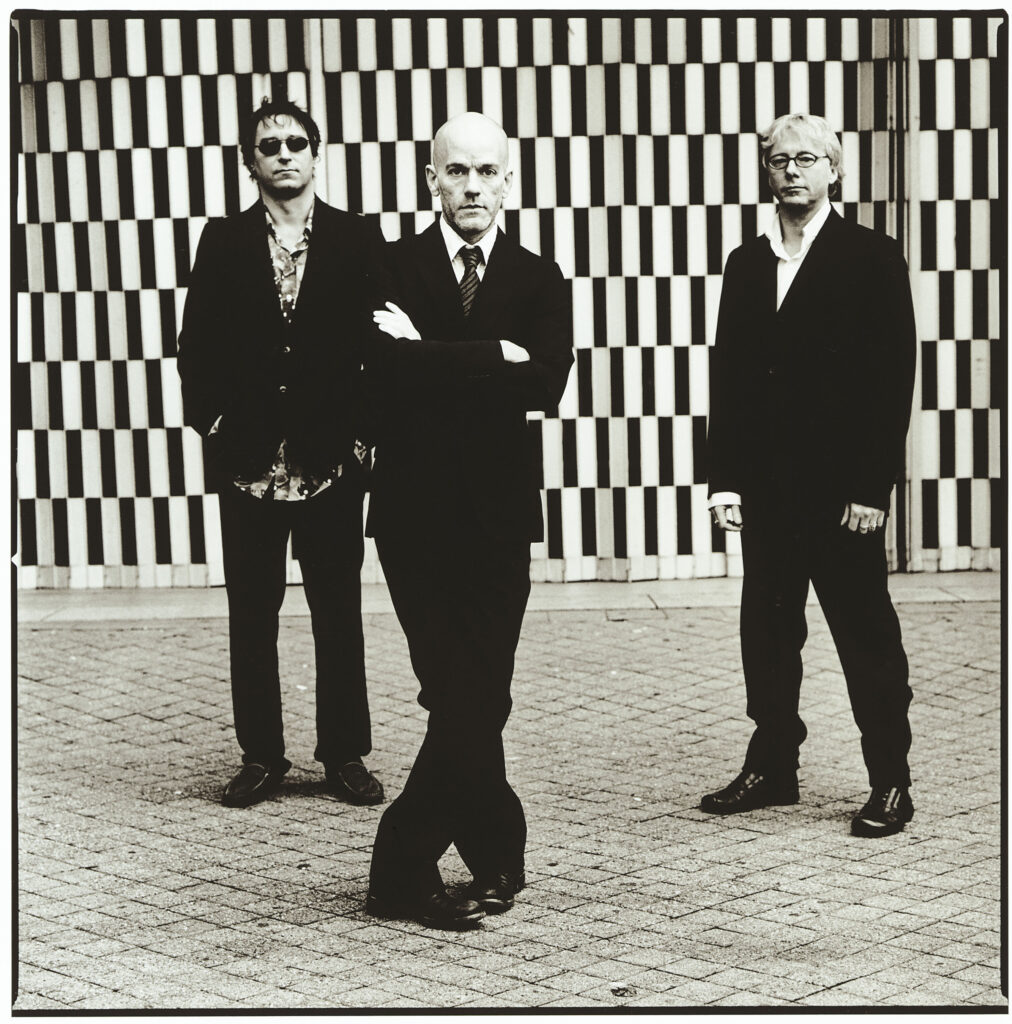Georgia’s diverse geography, moderate climate, transportation infrastructure, modern amenities, and skilled film crews have long made it an attractive destination for film companies, but it was a major tax credit passed by the state legislature in 2008 that truly solidified Georgia’s film industry.
Once a film or television project has been approved, it is up to the project’s producer to find a cost-effective location that fits the needs of the screenplay. Georgia competes with many other states and countries for film and television projects, but the kinds of projects Georgia has attracted have changed over time. In the last decades of the twentieth century, shows set in the South were most likely to film in the state. Since the tax credit, projects filmed in Georgia have used studios to portray any number of places, including outer space.
The 1970s: Burt Reynolds and the Car-Chase Craze
Although various movies have been shot in Georgia since the early days of film, it was Deliverance (1972) that truly brought the state to Hollywood’s attention. Based on the best-selling James Dickey novel and directed by John Boorman, Deliverance stars Ned Beatty, Ronny Cox, Burt Reynolds, and Jon Voight as Atlanta businessmen whose rafting excursion down a remote mountain river goes horribly wrong. Shot along the Chattooga River in Rabun County, the film was a commercial and critical success.
Deliverance was locally controversial in its perceived depiction of mountain residents as backwoods hillbillies. But the production was an economic boon to the state, a fact not lost on then-governor Jimmy Carter. He established a state film commission in 1973 to market Georgia as a shooting location for future projects.
Production grew in Georgia throughout the 1970s, and it was once again Burt Reynolds who brought blockbuster projects to the state. Smokey and the Bandit (1977) and Smokey and the Bandit II (1980) both feature Reynolds as the Bandit, an outlaw pursued at high speeds across the South by Sheriff Buford T. Justice (played by Jackie Gleason). Shot on various state highways, in such towns as Jonesboro, and at the Atlanta Motor Speedway, these hugely successful films launched a craze of car-chase films at the end of the decade.

CBS was quick to jump on this craze with its hit television series The Dukes of Hazzard (1979-85). Onetime Georgia resident John Schneider and Tom Wopat starred as the Duke boys, rebellious cousins always outrunning the local police in their muscle car, the General Lee. Although Dukes later moved production to California, the first several episodes were shot in and around the city of Covington. The first jumping of the General Lee (seen in the show’s opening credits) took place on the campus of nearby Oxford College of Emory University.
The 1980s and 1990s: Covington, Miss Daisy, and Savannah
Covington would later feature prominently in another television series, In the Heat of the Night (1988-94). Conceived as a continuation of the 1967 Academy Award–winning film of the same name, In the Heat of the Night stars Carroll O’Connor as a small-town sheriff and Howard E. Rollins Jr. as his African American lieutenant. Covington stood in for Sparta, Mississippi, where the two characters solved a different crime each episode, frequently overcoming racial tensions and small-town politics. Production of the show became part of everyday life for residents of Covington, with numerous locals hired as extras and several area businesses serving the production crew.

Covington was not the only Georgia city to be seen nightly on the nation’s television screens. I’ll Fly Away (1991-93), an NBC series starring Sam Waterston as a southern lawyer at the dawn of the civil rights movement, was shot largely in historic Madison, as well as in Conyers, Covington, Monticello, Newnan, and other locations.
Feature-film production boomed in Georgia throughout the 1980s and 1990s. Sharky’s Machine (1981), directed by and starring Burt Reynolds, caused a sensation in downtown Atlanta when the film crew shot a 220-foot outdoor free-fall stunt from the top of the Westin Peachtree Plaza Hotel. Later films such as My Cousin Vinny (1992) and Remember the Titans (2000) were shot throughout the state.
If Burt Reynolds was the movie star most identifiable with Georgia in the 1970s, Jessica Tandy was arguably Georgia’s most representative star of the late 1980s and early 1990s. Driving Miss Daisy (1989), based on Alfred Uhry’s play and starring Tandy and Morgan Freeman, was set largely in the Atlanta area. The story of an elderly Jewish woman who develops a close bond with her African American chauffeur, Driving Miss Daisy won several Academy Awards, including Best Picture and Best Actress for Tandy.

Tandy then starred in another Georgia production, Fried Green Tomatoes (1991). Directed by Jon Avnet and based on Fannie Flagg’s novel, Fried Green Tomatoes is the story of two women in 1920s Alabama who become friends despite their differences and open a restaurant together called the Whistle Stop Cafe. Film crews transformed a local establishment in the small town of Juliette, in Monroe County, into the cafe, where it remains as a tourist attraction for fans of the film.
During this time, many filmmakers began to discover the unique and mysterious charm of Savannah. Though most of the film was shot in other states, Forrest Gump (1994) became forever linked with Savannah because the bench from which Forrest (played by Tom Hanks) tells stories about his life was located in Chippewa Square. (The actual bench now sits in the Savannah History Museum.) The Academy Award–winning film Glory (1990), based on the true story of the first all-Black volunteer company to fight in the Civil War (1861-65), was also shot in Savannah and other coastal areas of the state. Midnight in the Garden of Good and Evil (1997), Clint Eastwood’s adaptation of the best-selling work by John Berendt, only added to the influx of tourists visiting Savannah because of the book.
The Early 2000s: Box Office Hits and Tax Credit Wars
A wide variety of films continued to be shot in Georgia, including the box-office smash Sweet Home Alabama (2002), starring Reese Witherspoon. Despite its title, it was shot almost entirely in Georgia, with the small town of Crawfordville, in Taliaferro County, standing in for fictional Pigeon Creek, Alabama.
Diary of a Mad Black Woman (2005), written by and starring Tyler Perry, was shot in the Atlanta area. Like Sweet Home Alabama, Diary of a Mad Black Woman opened number one at the box office its first week and spawned the Atlanta-based sequel Madea’s Family Reunion (2006). Also in 2006 Perry founded Tyler Perry Studios in Atlanta, where he shot his television situation comedy House of Payne. In 2008 the BET network premiered the comedy series Somebodies. Written by University of Georgia graduate Henry Cameron “Hadjii” Hand and filmed in Athens, the series was based on his independent film featured at the Sundance Film Festival.

Despite these successes, Georgia began to face stiffer competition from other states and nations (like Canada) that offered film producers tax credits. To lure more projects, both public and private entities worked to create new incentives encouraging filmmakers to come to Georgia. In 2001 the Georgia General Assembly passed legislation exempting the television and film industry from sales and use taxes on production-related expenses.
After a Ray Charles biopic was produced in Louisiana rather than Georgia in 2004, the General Assembly passed the Georgia Entertainment Industry Investment Act in 2005, which offered income tax credits for filmmakers who worked in Georgia. The legislation resulted in a revenue increase for the state from $124 million in 2004 to $475 million in 2006.
In May 2008 Georgia governor Sonny Perdue signed into law a revised Entertainment Industry Investment Act at the studios of Turner Broadcasting System. This more generous legislation gave production companies a 20 percent tax credit for filming in Georgia, with an additional 10 percent credit if the final product featured a Georgia peach logo promoting the state. This tax credit raised Georgia’s profile substantially, being among the largest tax credits in the nation.
With such favorable legislation, several production companies began to invest in more concrete facilities in Georgia. RiverWood Studios, based in Coweta County, began restoring and constructing buildings in historic Senoia in 2007 to create a permanent nineteenth-century-town set. In 2013 British Pinewood Studios built their first U.S. location in Fayette County, partnering with a Cathy family trust to construct Pinewood Atlanta (now Trilith).
The 2010s and Beyond: Mega-Blockbusters and Controversies
The tax credit incentive and establishment of more permanent studios in Georgia brought about extensive production in the state. In the five years spanning 2013 through 2017, more projects filmed in Georgia than in all previous decades combined, leading Atlanta to be nicknamed “the Hollywood of the South.” Among these projects were large and popular franchise productions, including the final films of the Hunger Games series and several films produced by Marvel Studios. Filmed at Pinewood Atlanta, Avengers: Endgame (2019) rapidly earned $2.5 billion at the box office, becoming one of the highest-grossing films ever. The increase of digital streaming services and their push for original context also found Georgia’s tax credit hospitable for production demands.

This growth did not come without controversy or criticism. As the Great Recession cratered state revenue, some argued the tax credit was an expensive giveaway to the film industry. Supporters countered that film production in Georgia boosted businesses that otherwise would have gone under during the recession. Despite occasional efforts to repeal or lower the tax credit, the rate has stayed the same since 2008. In 2020 the General Assembly passed legislation requiring an audit of expenditures in the state to qualify for the tax credits.
Other actions by the legislature have provoked criticism from the film industry and calls to boycott production in the state. A restrictive abortion law passed in 2019 and changes to Georgia’s voting laws in 2021 have led to industry calls to boycott the Peach State. Producers like Tyler Perry, however, have said that even when disagreeing with legislation it makes little financial sense to move their investments out of state.
More challenging to Georgia’s film industry was the onset of the COVID-19 pandemic, which led to the shutdown of many studios and the furlough of employees. Within months, the state government rolled out a series of best practices for filming during pandemic conditions, and filming began again for most productions by the end of 2020.
Independent Film, Music, and Gaming Industries
In addition to major motion picture production, the film industry in Georgia also includes support and venues for smaller independent projects. The Atlanta Film Festival, run by the Atlanta Film Society, presents features, documentaries, and short films from around the world. With roots going back to 1987, Out on Film has independently sponsored LGBTQ films since 2008.

Notable film schools also operate in the state, including the Film and Television Department at the Savannah College of Art and Design (SCAD), which also hosts the annual Savannah Film Festival, and Georgia State University’s film production program. Additionally, local and out-of-state production companies have shot nationally broadcast spots for corporations with headquarters in Georgia, including Coca-Cola, Delta, and the Weather Channel.
While feature films and television programs have attracted the most attention, a robust music-video industry has also emerged in Georgia. Due in part to Georgia’s growing recorded-music industry and the large number of popular-music artists who reside in the state, music-video production provides jobs to many local crew members. Such renowned local artists as Bow Wow, Ciara, Ludacris , R.E.M., Third Day, T.I., Usher, and Trisha Yearwood have chosen Georgia as the backdrop for their music videos.

The production of other multimedia products, particularly video games, have also generated sizeable profits. Georgia became a well-known center for video game development by tapping into local technical and arts colleges, including SCAD and the Georgia Institute of Technology, for their development teams. In 2006 the state legislature enacted tax code changes allowing digital entertainment producers, including video game companies based outside the state, to gain new savings on products developed in Georgia.


























